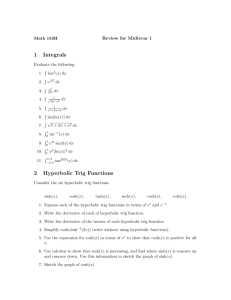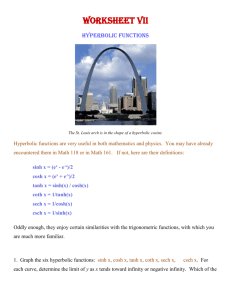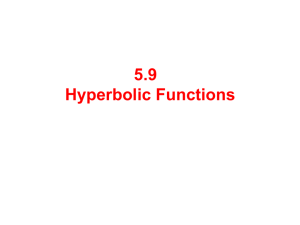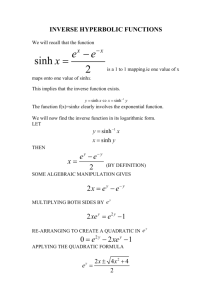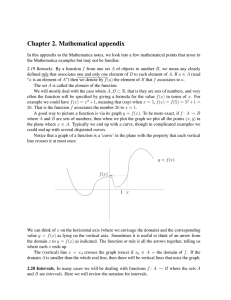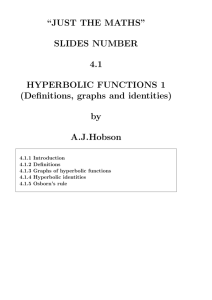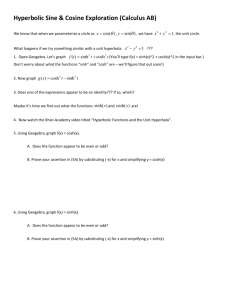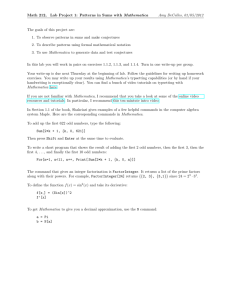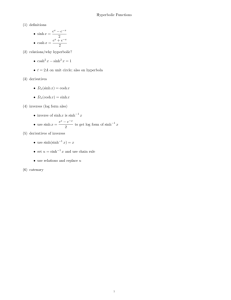Hyperbolic Trig Functions
advertisement
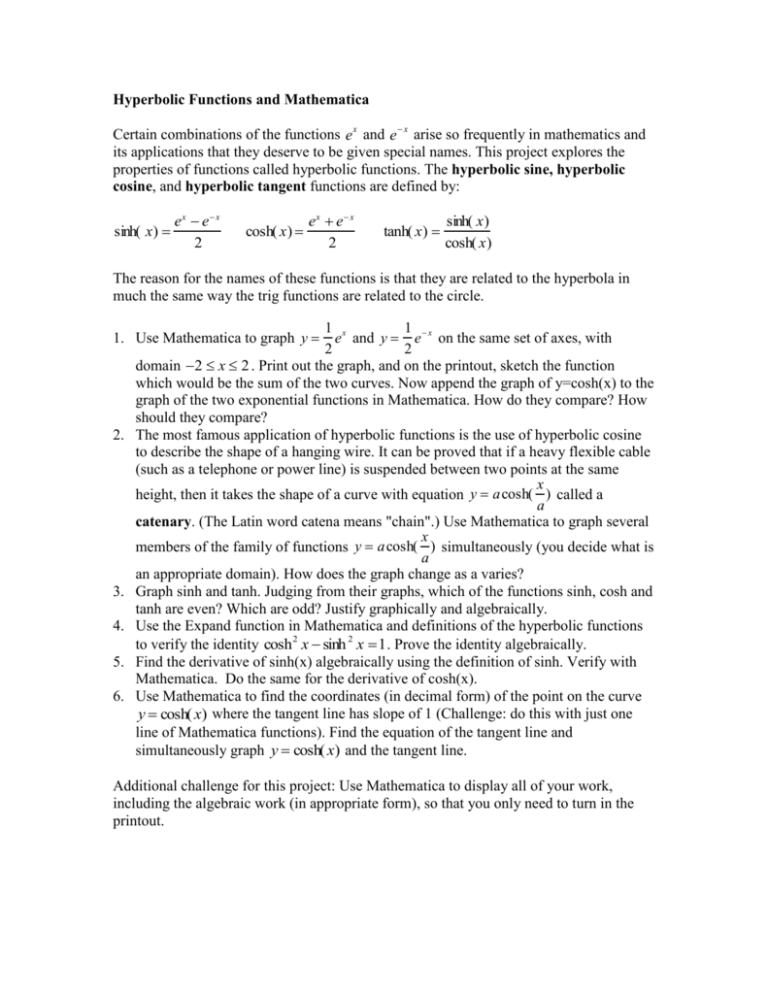
Hyperbolic Functions and Mathematica Certain combinations of the functions e x and e x arise so frequently in mathematics and its applications that they deserve to be given special names. This project explores the properties of functions called hyperbolic functions. The hyperbolic sine, hyperbolic cosine, and hyperbolic tangent functions are defined by: ex e x sinh( x) 2 ex e x cosh( x) 2 tanh( x) sinh( x) cosh( x) The reason for the names of these functions is that they are related to the hyperbola in much the same way the trig functions are related to the circle. 1 x 1 e and y e x on the same set of axes, with 2 2 domain 2 x 2 . Print out the graph, and on the printout, sketch the function which would be the sum of the two curves. Now append the graph of y=cosh(x) to the graph of the two exponential functions in Mathematica. How do they compare? How should they compare? The most famous application of hyperbolic functions is the use of hyperbolic cosine to describe the shape of a hanging wire. It can be proved that if a heavy flexible cable (such as a telephone or power line) is suspended between two points at the same x height, then it takes the shape of a curve with equation y acosh( ) called a a catenary. (The Latin word catena means "chain".) Use Mathematica to graph several x members of the family of functions y acosh( ) simultaneously (you decide what is a an appropriate domain). How does the graph change as a varies? Graph sinh and tanh. Judging from their graphs, which of the functions sinh, cosh and tanh are even? Which are odd? Justify graphically and algebraically. Use the Expand function in Mathematica and definitions of the hyperbolic functions to verify the identity cosh 2 x sinh 2 x 1 . Prove the identity algebraically. Find the derivative of sinh(x) algebraically using the definition of sinh. Verify with Mathematica. Do the same for the derivative of cosh(x). Use Mathematica to find the coordinates (in decimal form) of the point on the curve y cosh( x) where the tangent line has slope of 1 (Challenge: do this with just one line of Mathematica functions). Find the equation of the tangent line and simultaneously graph y cosh( x) and the tangent line. 1. Use Mathematica to graph y 2. 3. 4. 5. 6. Additional challenge for this project: Use Mathematica to display all of your work, including the algebraic work (in appropriate form), so that you only need to turn in the printout.

